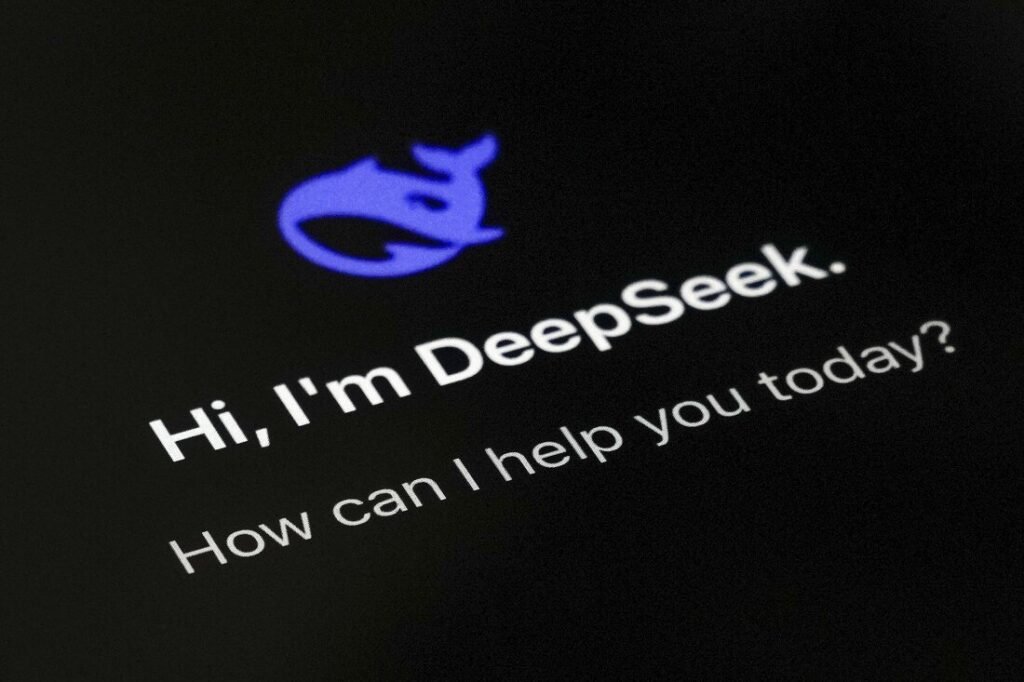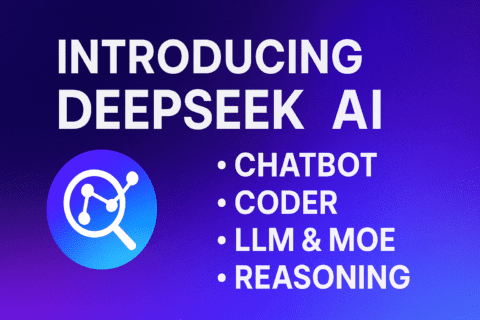Introduction: Why MoE Matters in the LLM Era
As large language models (LLMs) scale to hundreds of billions or even trillions of parameters, a critical engineering challenge arises: how do we sustain or improve performance without letting computational cost explode? This question has sparked innovative approaches in LLM architecture design. One of the most impactful among these is the Mixture of Experts (MoE).
DeepSeek AI, a trailblazing open-source initiative, has positioned MoE at the core of its scalable LLMs. With releases like DeepSeek-V2, DeepSeek-V3, and specialized versions like DeepSeek-Coder, the company has proven that smart architectural choices can deliver high-level performance on par with GPT-3.5 while keeping efficiency front and center.
In this blog post, we take a comprehensive look at DeepSeek’s MoE implementation. We’ll explain the MoE concept in depth, explore how DeepSeek integrates it, compare it with prior architectures like Google’s Switch Transformer and GShard, and present benchmark results to quantify its performance. We also dive into real-world use cases, challenges, and opportunities for researchers and developers.
What is MoE (Mixture of Experts)?
Mixture of Experts (MoE) is a sparse neural network architecture where only a small subset of the model’s parameters are active per input. This contrasts with traditional dense models, where all parameters are involved for every token.
Core Concept:
MoE introduces routing mechanisms within the network layers. Instead of passing all inputs through every unit in the layer, MoE routes each token (or group of tokens) to a few specialized “expert” subnetworks. These experts are typically smaller feedforward networks or MLPs trained for specific tasks or contexts.
Simplified Analogy:
Think of a MoE model as a consulting agency with hundreds of domain experts. When a query comes in, the agency uses a dispatcher (router) to direct it to the top two most relevant consultants. This allows the system to scale up in expertise without paying the cost of involving every expert for every request.
Benefits:
Scalability: Enables models to scale to hundreds of billions of parameters without proportional inference costs.
Specialization: Experts can learn niche or task-specific behaviors, improving overall generalization.
Efficiency: Fewer active parameters per input reduce runtime cost.
Trade-offs:
Complexity: Routing introduces non-trivial implementation overhead.
Training Stability: Sparse gradients and expert imbalance can complicate convergence.
Expert Utilization: Some experts may be underused, reducing overall effectiveness.
Debuggability: Tracing failure cases to specific experts can be harder.
How DeepSeek Implements MoE
Model Overview:
DeepSeek leverages MoE layers embedded within transformer blocks. The architecture is designed to maximize token-expert affinity while maintaining load balance. This gives DeepSeek models an edge in both reasoning and scale-efficiency.
Key Parameters:
Number of Experts: 16 to 64 (configurable by model size)
Routing Mechanism: Top-2 gating using a learned scoring function
Sparsity: Only 2 experts are activated per token (i.e., Top-2)
Context Window: Up to 32K tokens
Expert Capacity Factor: Dynamically adapted to avoid overloading
Load Balancing: Introduces auxiliary losses to ensure fair usage of all experts
Routing & Load Strategy:
DeepSeek’s Top-2 routing computes a softmax over expert scores and selects the top two experts per token, distributing their respective contributions. During training, a load-balancing loss ensures experts are neither overused nor starved. The system is also optimized to maintain high GPU utilization and avoid communication bottlenecks.
“With MoE, DeepSeek achieves GPT-3.5-level reasoning on MMLU with less than half the active compute.”
— DeepSeek Technical Report, 2024
Key Innovations & Comparisons
| Feature | DeepSeek MoE | Switch Transformer | GShard | GPT-4 (rumored) |
|---|---|---|---|---|
| Routing | Top-2 learned | Top-1 soft routing | Gumbel softmax | Unknown |
| Experts | 16–64 | 64–128 | 128–256 | Estimated 16–32 |
| Open Source | ✅ Yes | ✅ Yes | ✅ Yes | ❌ No |
| Load Balancing | Scaled loss term | Auxiliary loss | Gradient-based | Unknown |
| Token Capacity | 32K | 4K–8K | 8K | 32K+ (est.) |
Architectural Highlights:
RMSNorm + Gated Attention: Boosts training stability
Token-aware Routing: Improves performance on long-form inputs
Smarter Load Distribution: Reduces variance in expert utilization
Efficient Expert Sharding: Enhances parallelism across GPUs
Compared to Google’s Switch Transformer, DeepSeek’s use of Top-2 routing and better token routing regularization leads to improved convergence rates, smoother training, and more balanced expert participation.
Benchmarks & Performance Metrics
DeepSeek’s MoE models have set benchmarks across multiple domains. Their open benchmarks show how sparse activation delivers results that rival or exceed commercial APIs.
MMLU (Massive Multitask Language Understanding):
DeepSeek-V3 (MoE): 72.3% @ 67B
GPT-3.5: ~70%
CodeLlama 34B: ~65.2%
HumanEval (Code Generation Accuracy):
DeepSeek-Coder: 84.2% pass@1 (Python)
GPT-4 (closed): ~90%
CodeLlama: 64.2%
MT-Bench (Multilingual Reasoning):
DeepSeek-R1 (Reasoning Model): 94.1 average, one of the top open-source models globally
Performance Footprint:
MoE reduces active FLOPs by 3–4x compared to dense models
Context expansion to 32K without accuracy degradation
Source: DeepSeek GitHub Benchmarks
Pros, Cons, and Real-World Applications
Advantages of MoE in DeepSeek:
Scale Efficiency: Add more parameters without increasing inference cost
Task Specialization: Expert networks learn subtasks more efficiently
Inference Speed: Active compute remains sparse, making runtime efficient
Open Ecosystem: Models, weights, and training logs are public
Limitations to Consider:
Hardware Compatibility: Some GPUs struggle with sparse computation patterns
Training Cost: Training sparse models is often slower due to load balancing overhead
Debugging Tools: Fewer observability tools for expert activations
Enterprise & Developer Use Cases:
Software Development: Intelligent autocompletion, bug fixing
Customer Support: Routing queries by language, intent, or urgency
Research & Education: Interactive tutoring agents for STEM disciplines
Business Intelligence: Report generation from structured datasets
Challenges and Open Questions
While MoE shows great promise, several open challenges remain in productionizing and scaling it:
Expert Under-utilization
Inactive experts represent wasted training cycles. Research is ongoing on dynamic pruning or merging low-utility experts.
Load Imbalance
Uneven token distribution can overload certain experts and slow training. Loss terms are needed to force diversification.
Memory Usage
Total parameter storage increases with the number of experts, even though activation remains sparse. This poses challenges in limited-resource environments.
Latency and Jitter
Routing introduces slight latency variances, especially in multi-node setups. Techniques like caching, pre-routing, or adaptive batching are in development.
“Making MoE scalable and stable at trillion-parameter scale is one of the grand challenges of current AI engineering.”
Summary & Future Outlook
DeepSeek’s implementation of MoE demonstrates the enormous potential of sparse LLM architectures. With highly tuned routing, smart expert balancing, and open benchmarks to prove their claims, DeepSeek is helping shape the next generation of language models.
TL;DR:
MoE allows activating just 5–10% of model weights per token
DeepSeek implements Top-2 routing with up to 64 experts
Benchmark results match or beat GPT-3.5 on key tasks
Opens new doors for large-scale AI with reduced compute requirements
What to Watch For:
Integration of MoE + RAG for retrieval-augmented reasoning
Efficient distillation of MoE into compact models
Enterprise-grade MoE-as-a-service APIs
Greater tooling for routing visualization and optimization
Now is the perfect time for AI practitioners, researchers, and engineers to experiment with MoE, contribute to its evolution, and build a more scalable future for deep learning.
MoE vs RAG: A Comparative Breakdown
As the AI community explores ways to improve both the scale and intelligence of language models, two architectures have emerged as dominant paradigms: Mixture of Experts (MoE) and Retrieval-Augmented Generation (RAG).
Though both aim to boost model performance and efficiency, they represent fundamentally different approaches to tackling the limitations of large language models. Here’s how they compare:
What is Retrieval-Augmented Generation (RAG)?
RAG augments an LLM by combining it with an external knowledge retriever (such as a vector database). Instead of depending solely on the model’s internal parameters, RAG queries a document corpus or search index and conditions the generated output on retrieved results.
Example: Rather than training a model to memorize all Wikipedia, a RAG-based LLM fetches relevant entries at inference time and synthesizes a response using that context.
Key Differences Between MoE and RAG
| Feature | MoE | RAG |
|---|---|---|
| Purpose | Scale model efficiently | Integrate external knowledge |
| Mechanism | Sparse expert activation per token | On-the-fly retrieval + generation |
| Architecture | Internal (routing among experts) | External (retriever + generator) |
| Token Dependency | Full self-attention context | Retrieved passages |
| Use Case | Reasoning, coding, multitask learning | Factual accuracy, domain-specific QA |
Complementary Use Cases
While MoE improves internal capacity and specialization, RAG enhances recall of up-to-date or rare information. In fact, MoE + RAG is becoming a powerful hybrid, where sparse compute meets real-world grounding.
MoE Strengths: Logic, generalization, code, math
RAG Strengths: Domain-specific facts, document-heavy workflows, enterprise search
Example Architectures
DeepSeek-V3: MoE-based, optimized for inference efficiency
Meta’s RETRO, LangChain, Perplexity.ai: RAG-based pipelines using vector stores like Pinecone or FAISS
Hybrid RAG+MoE (experimental): Routing tokens to different expert pathways and augmenting with retrieval from enterprise databases
Trade-Offs
| Aspect | MoE | RAG |
|---|---|---|
| Cost of Pretraining | High (requires large expert pool) | Medium (smaller base model possible) |
| Cost of Inference | Low per token | High retrieval latency depending on backend |
| Scalability | Excellent (parallelizable experts) | Bounded by retriever index size |
| Memory Footprint | High (many experts stored) | Moderate (external embeddings stored) |
When to Use Which:
Use MoE when you’re optimizing for complex multi-step reasoning, long-form context, and task generalization.
Use RAG when the domain is rapidly evolving or the system must pull in real-time or proprietary data.
The Future: MoE x RAG Fusion?
Many researchers envision future architectures where:
MoE handles generalizable reasoning tasks
RAG feeds specialized knowledge into token-specific expert pathways
Combined models learn to selectively route both internally (experts) and externally (retrievers)
This hybrid paradigm could give rise to super-efficient models that are both highly specialized and deeply informed.
“MoE lets the model think better. RAG helps it know more. Together, they may define the next generation of AI architecture.”
Want to dive deeper into RAG architecture next? Let us know and we’ll break down how RAG pipelines work end-to-end with retrieval indexing, embedding strategies, and latency optimizations.
References:




